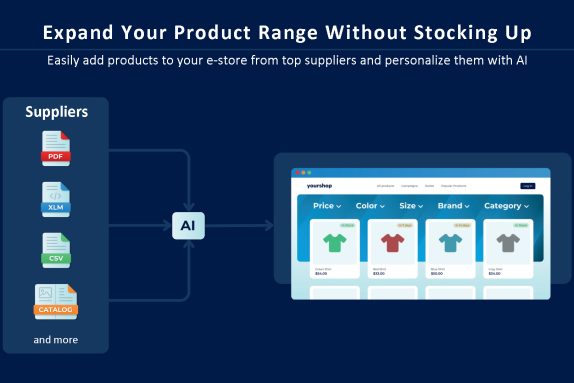“Daddy, I want to buy 20 euros worth of groceries from Temu for my birthday, please please please!” Anyone else in the family?
Who has not heard of Temu. A solution selling direct from Chinese factories at ultra-low prices is gaining a foothold in Estonia, and winning the market in a recession. In this blog post, we’ll give our take on Temu and comment on each point below. As Temu and its parent company Pinduduo are tight-lipped about the information they provide, we have based our review on material available on the internet and personal experience.
The story of Temu
Temu e-commerce store was launched in 2022 and has experienced incredible growth in this short time. It has overtaken both Amazon and Shein in two years, and is currently by far the most downloaded app in the App store (Statista reports an average of 30 million new downloads in a month), threatening US retail giant Amazon. The Chinese no longer just know how to produce, but also how to market.
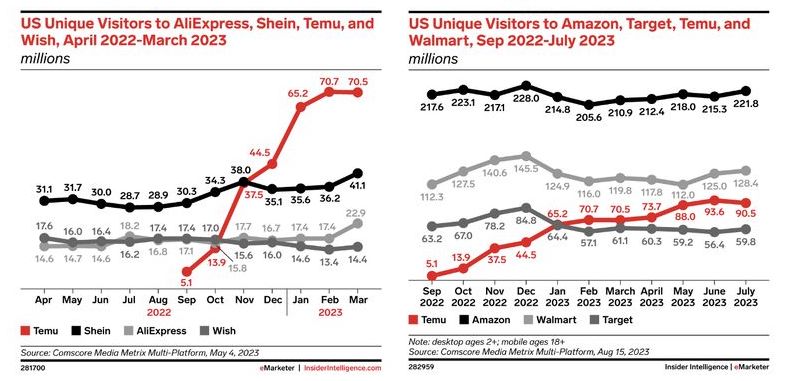
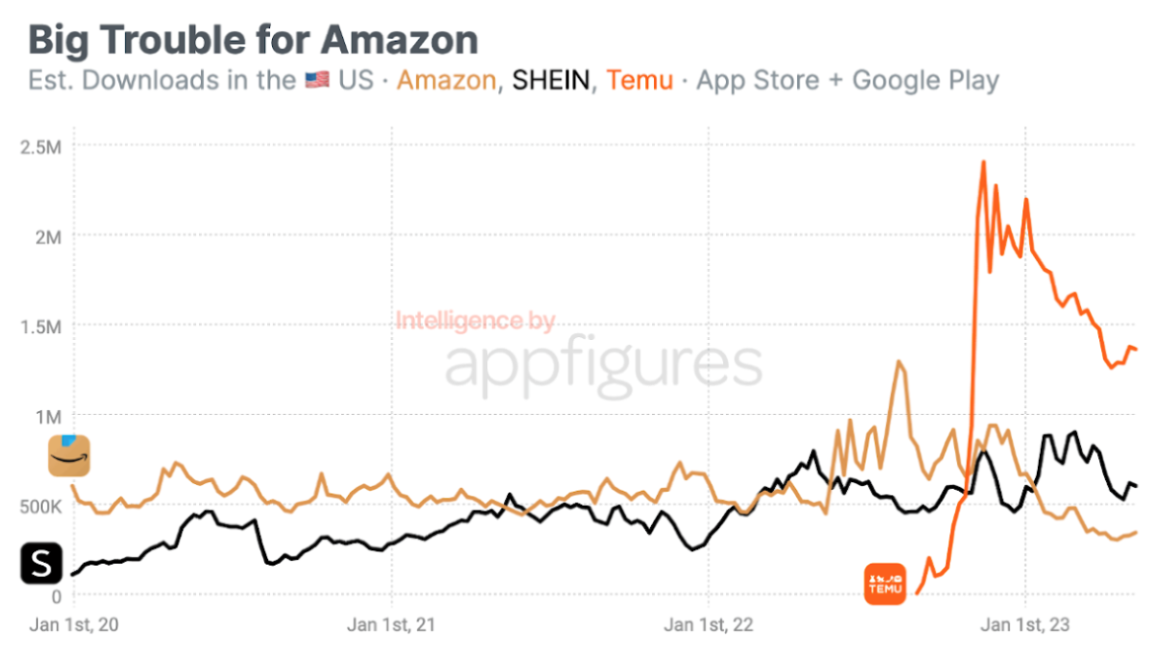
Source: Emarketer
Behind every success story are people. It was created by Colin Huang, who was born in China into a family of simple factory workers but went on to study computer science at the University of Wisconsin. The young engineer got a job at Google, where he worked for two years. In 2007, he set up his first business, Oku marketplace, which he sold three years later for 2.2 million. He went on to found mobile games company Xinyoudi Studio and other companies. The real success story came with the creation of the online marketplace Pinduduo (PDD), which grew into Temu. PDD made Colin the third richest person in China and the 33rd richest in the world by 2023.
He is considered to be the biggest self-made millionaire in the world and his background backs up the success story: a strong IT background, marketing and game creation experience applied to e-commerce.
Temu has achieved its competitive advantage, supreme prices, by micromanaging producers, including dictating prices. Criticisms of Temu’s parent company PDD (Pinduoduo) include its closedness to journalists, concealment of ownership structure, alleged tracking software in the app, overly harsh working practices, intellectual property, concealment of investment size, etc (see Financial Times video story). There has also been criticism of the low quality of the products, which means a larger environmental footprint and in some cases even alleged hazardousness. Temu has a number of lawsuits pending, including against Chinese fast-fashion brand Shein, which is allegedly trying to prevent its subcontractors from providing services to Temu. Despite the setbacks, he continues to grow rapidly.
Buy like a billionaire, advertise like a billionaire
Temu’s strength lies in its ability to offer a wide range of products at below-market prices, but with complete openness in terms of quality and long delivery times (at least to Estonia). The strategy to win new customers is to attract them to look at products (and prices) through playfulness as well as by pushing the boundaries. Once you get to the page, no matter how you are attracted, maybe something from the list will catch your eye and the wow effect in terms of price/discounts is quick to happen. The message “buy like a billionaire” is well chosen – you really do feel like royalty when you walk into the store. Nice to have gadgets that were previously out of reach due to price right there at your fingertips.
According to Temu, the low-cost model is based on the CTM (customer to manufacturer) model, which means distributing the products of large factories directly to customers in a way that saves on the logistics chain but also on marketing and branding.
The Temu/PDD is seriously committed to conquering the world outside China, and is arguably the biggest advertiser in history. For example, it invested €21 million in advertising for the Superbowl. For example, in the Chinese market, PDD bought a huge amount of advertising when it started out in order to gain the trust of its users, and later on, the cost of this advertising has fallen significantly as a proportion of the total budget. They seem to have the same plan with Temu. Advertising and discounts are burning up Temu’s finances from both ends, and the question remains whether they can find a large enough number of loyal subscribers before they run out of money.
How do people get to Temu’s page? Paid advertisements on various social media channels (Facebook), showing a variety of eye-catching products at great prices. The ads are tailored to the target audience and are very creative to attract attention at all costs, including a number of shocking products (e.g. silicone feet, babies). A number of forums and Facebook groups have been set up by users, e.g. Daily Dose of Temu, showing what incredible things they have found in the store, but also interspersed with good offers.
A middle-aged man, on the other hand, might receive ads such as:

Clicking on the ad will be followed by a wheel of fortune (which almost always has a discount rate of 92%, with a re-spin) and then an invitation to download the app.
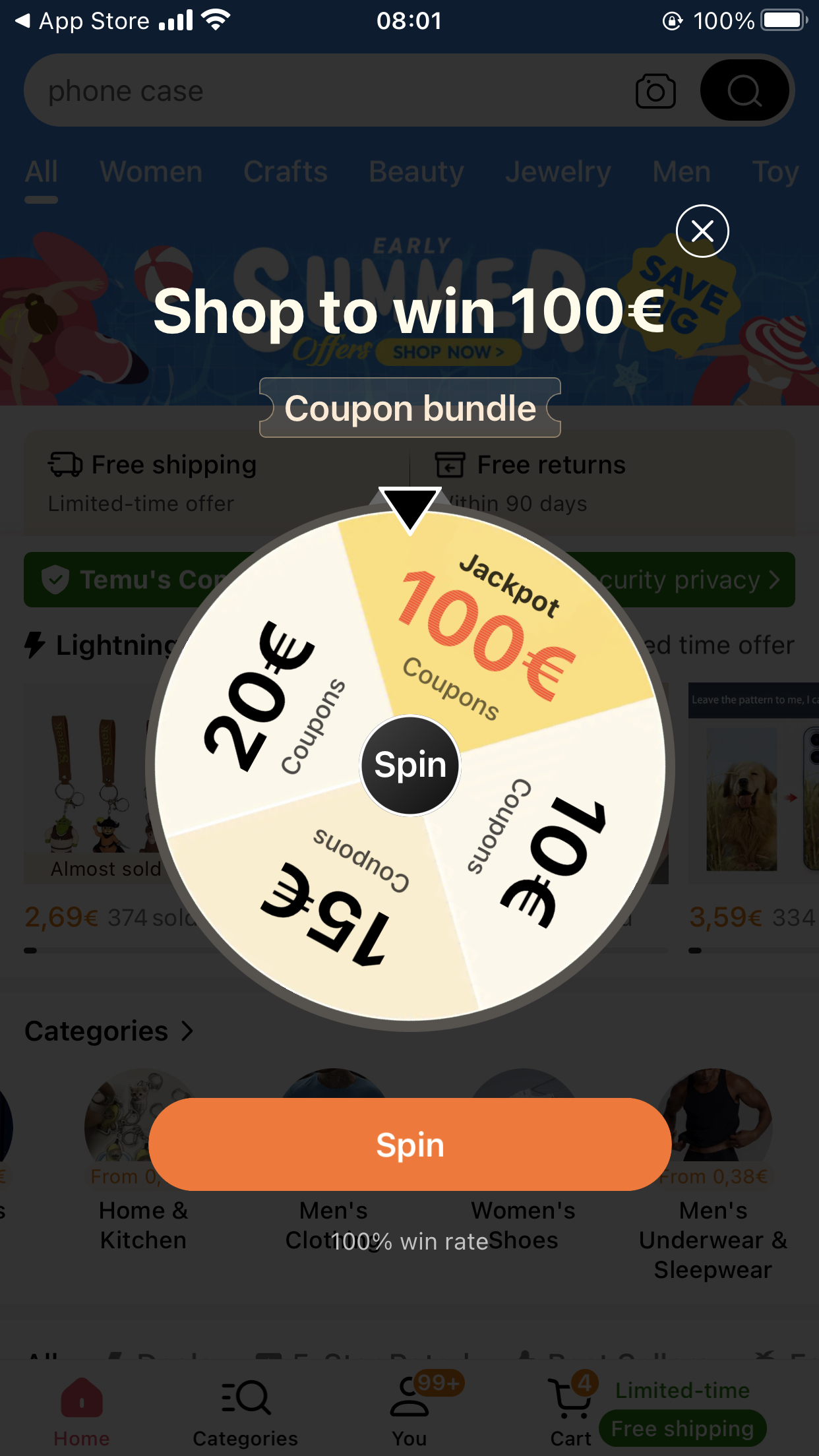
Separately, Temu is active in video marketing on TikTok and collaborating with influencers, with the most popular article being a look at interesting product launches. Temu has automated influencer affiliation through affiliate links, including reportedly paying a $5 commission for each follower who downloads the app in certain markets.
In discussions at the E-Commerce Union, the strategy of foreign e-shops entering the Estonian market has been commented as “a million euros in advertising”. Good old Bulgarian proverb: “If you can’t solve a problem with money, solve it with a large amount of money.”
Some observations on the user interface
Asia is dominated by large e-commerce retailers (in China, you may not even get permission to set up an e-store), with huge competition in terms of both price and user experience.
Every e-commerce entrepreneur is interested in what could be done right now and cost-effectively in their own e-store based on their experience… Just as the Chinese once copied Old World products, including all the bugs, we now have to evaluate Temu’s solutions with a critical eye and decide what to bring into our own e-store. We believe that the greatest value to any business comes from engaging with end customers and making changes accordingly (more on this in another post later), but below, in a free-form, bullet-point format, what stands out from a mobile view:
-
A continuing principle across the page is to display products, products, products at every opportunity – maybe you’ll see something interesting and clicking on them will make the product recommendation engine smarter again. Even on Temu’s home page, instead of banners, there are carousels of products. But elsewhere too – all sorts of content pages, under the product page, and even on the account page, they peek under the page, encouraging you to scroll down.

- When you go to the website (i.e. not using the app), you are automatically logged in. The information is apparently coming from the Chrome browser.
- The search will display ready-made words and phrases to choose from. Both your own searches and summaries are displayed.
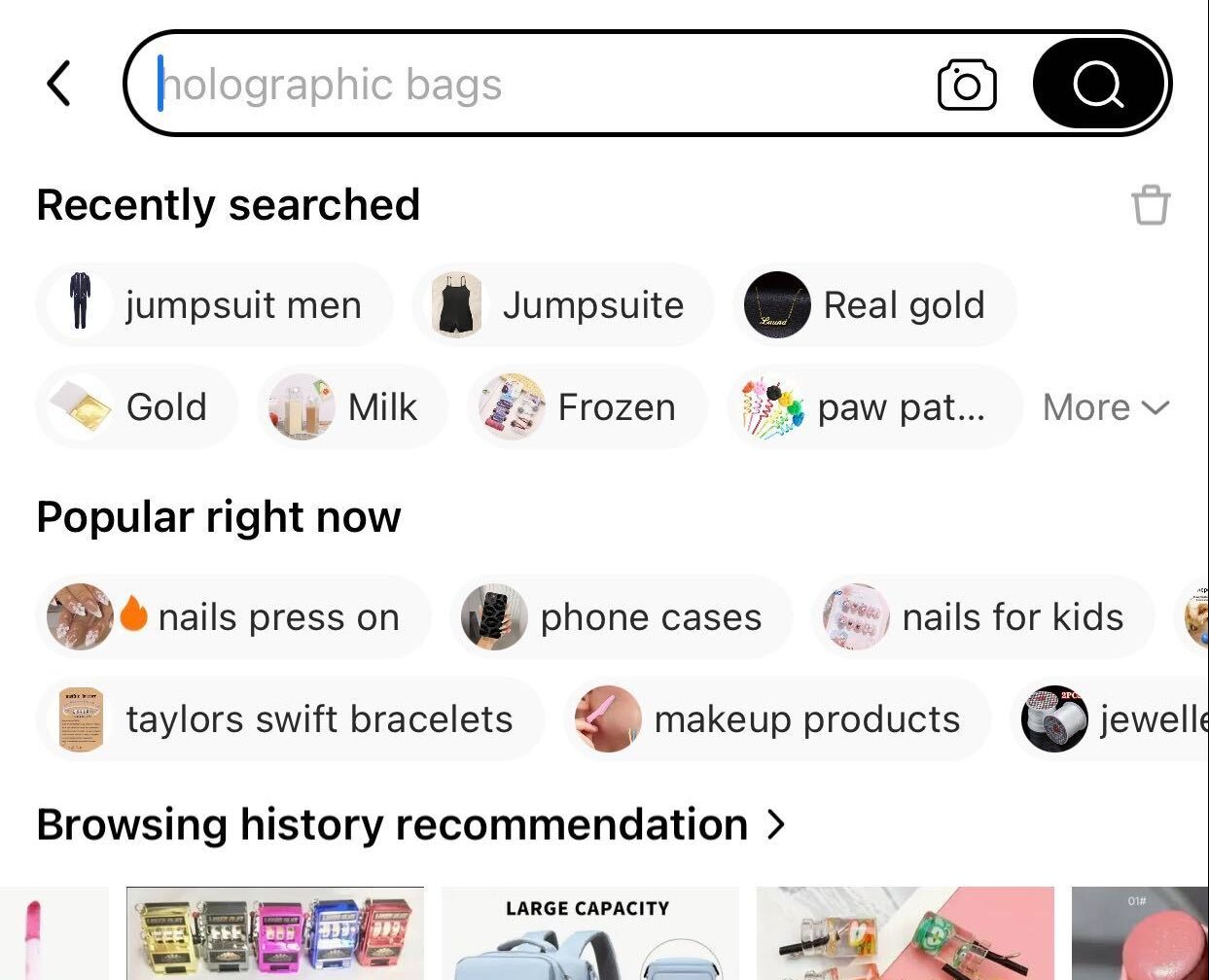
-
A well-working image search that finds a similar visual in seconds when zooming in on a product (even by Twix candy wrapper). The search engine was also offered as a standalone Chrome extension and even as a web portal (“Temu search” was renamed to THunt) to compare products. You don’t need to upload a picture to search, you can point the camera of your mobile phone at an object. Image search is quite fun to play with and test, I recommend to take your time. Basically, a customer can go to any store, pick up a Temu image search and see how much it would cost to order it from China.
- In order to display as much information as possible on the page, a horizontal scroll across the page has been used (i.e. additional information is displayed by pointing to the right and not scrolling down).
-
A lot has been invested in comments on products to create credibility for goods. After the goods arrive, a link will be sent after a while. When you write a comment, he provides (positive ;)) keywords so you can finish the text faster. These same ready-made keywords are then used later to filter the comments. When filtering comments, it is also possible to filter by country, including our lovely blue-black-white. Comments can also be rated and shared!
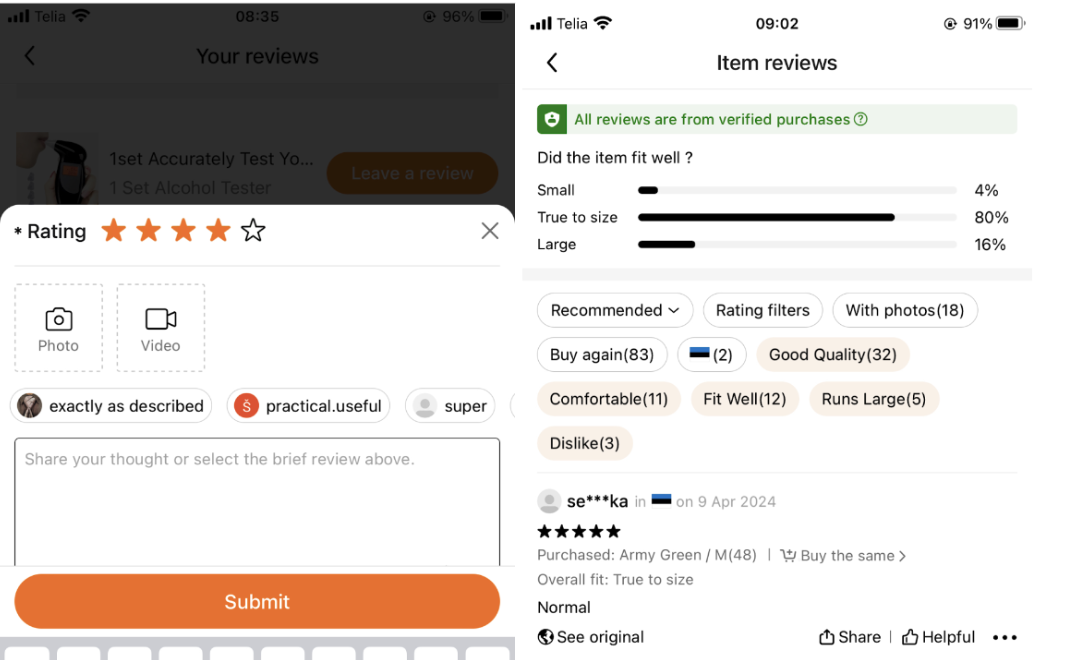
- On the catalogue page, emphasis is placed on the product image. As a trust element (although “made in China” is no longer a joke) the number of products purchased, the rating and the number of comments are displayed. Separately, low stock levels and if someone has just bought are highlighted. Products are ALWAYS displayed, although it is also possible to scroll by category on the left.
- Already in the product view, an attempt has been made to respond to the various showstoppers by adding confidence clauses concerning security, logistics, quality, returns, CO2 footprint… Each confidence element is accompanied by a claimed proof that cannot be directly verified, but appears reliable.
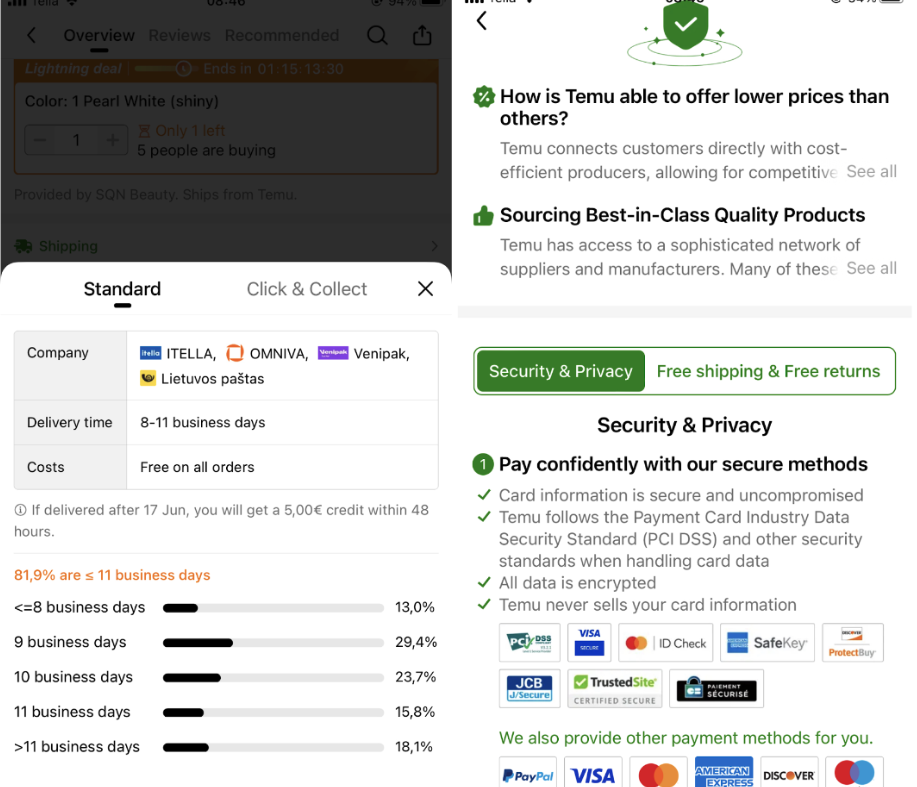
Temu app
Temu’s loyalty programme is based on a mobile app. All advertisements direct users to download the Temu app before making a purchase, promising a great recommendation on the first purchase. Shoppers are asked to turn on notifications at least 3 times during the customer journey (including every time they visit the app). Judging by the number of emails coming from Temu (especially flash sales), one can imagine that the phone never stops beeping when consent is given. Downloading the app will allow you to learn more about customer behaviour – the PDD mobile app is otherwise banned in Google Stores for alleged spyware.
Why a mobile app at all? At Lumav, we also occasionally interview knowledgeable end-customers of e-stores for our own interest – how shoppers behave and what they really think. A conscious shopper wants to maximise the discounts in a new e-store – they create a user, download the app and allow push notifications, and then immediately take them away after the purchase. However, the app of a likeable e-store is retained and preferred to the browser. We’ve also heard from conversations that e-stores with lots of interesting visual products are used instead of social media to scroll when, for example, you can’t sleep at night. Think about this when testing the mobile version of your e-store.
Does Temu take clients from you?
The question remains, is there anything that is not bought in your shop because it is bought from Temu? I haven’t (yet) heard from customers that someone complained that Temu had taken away their customers.
They tend to buy cheap everything you don’t need type gadgets (thrift store), whose quality you don’t care about and don’t mind throwing away. You don’t dare to buy too many “serious” products there, for example a laptop and charger from a local manufacturer, but a laptop cover and mouse pad… why not? The laptop comes with a warranty, but the white furry laptop cover goes in the bin after the first cup of coffee.
It is important to remember that, in the long term, customer attention and trust is the gold standard in e-business, and enables new products and services to be sold. It’s a long way from donut-earrings to furniture or even cars, but Temu has taken the first step. Think about it – you may slap your hand on the chest in the morning that you are an Estonian patriot; if you still see a cheaper product or service with the flag of an authoritarian state attached to it, either directly or indirectly through intermediaries, will you still buy the more expensive product? Or as a friend working in advertising provocatively asked: “Do you skip the Uber ride and order a yellow cab?”
Finally, three ideas from Temu’s analysis that could be learned for your own e-business:
- Broaden your assortment so customers can find more of what they need in your store. At Lumav, we’ve assisted many retailers with the integration of external assortments.
- Get to the screen on your client’s phone and learn how to use push notifications. The e-store can be turned into an app at a reasonable price. It is cheaper for those using PWA technology. Push notifications and emails… maybe don’t use them as frequently, but always sensibly and in a more highly personalized way.
- Analyse the customer journey, run test purchases and see if there are any low hanging fruit to help resolve customer hesitations. Most of the time, this doesn’t require development, just adding a few boxes of information. If you want a more in-depth facelift, get a developer on board in addition to the (UX/UI) designer to help keep costs in check.
I hope that this small review has given you some new ideas. Those of you who have spent your free time exploring Temu in depth and are willing to share your experiences, please make yourselves known! Margus is buying lunch.











